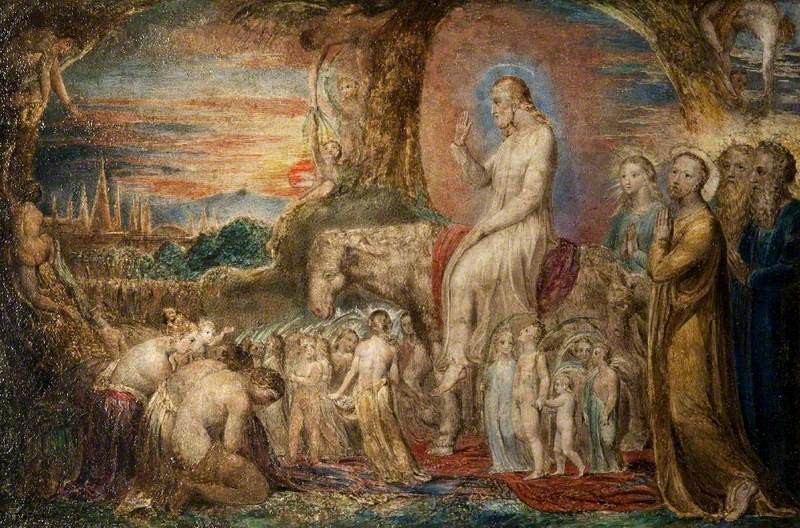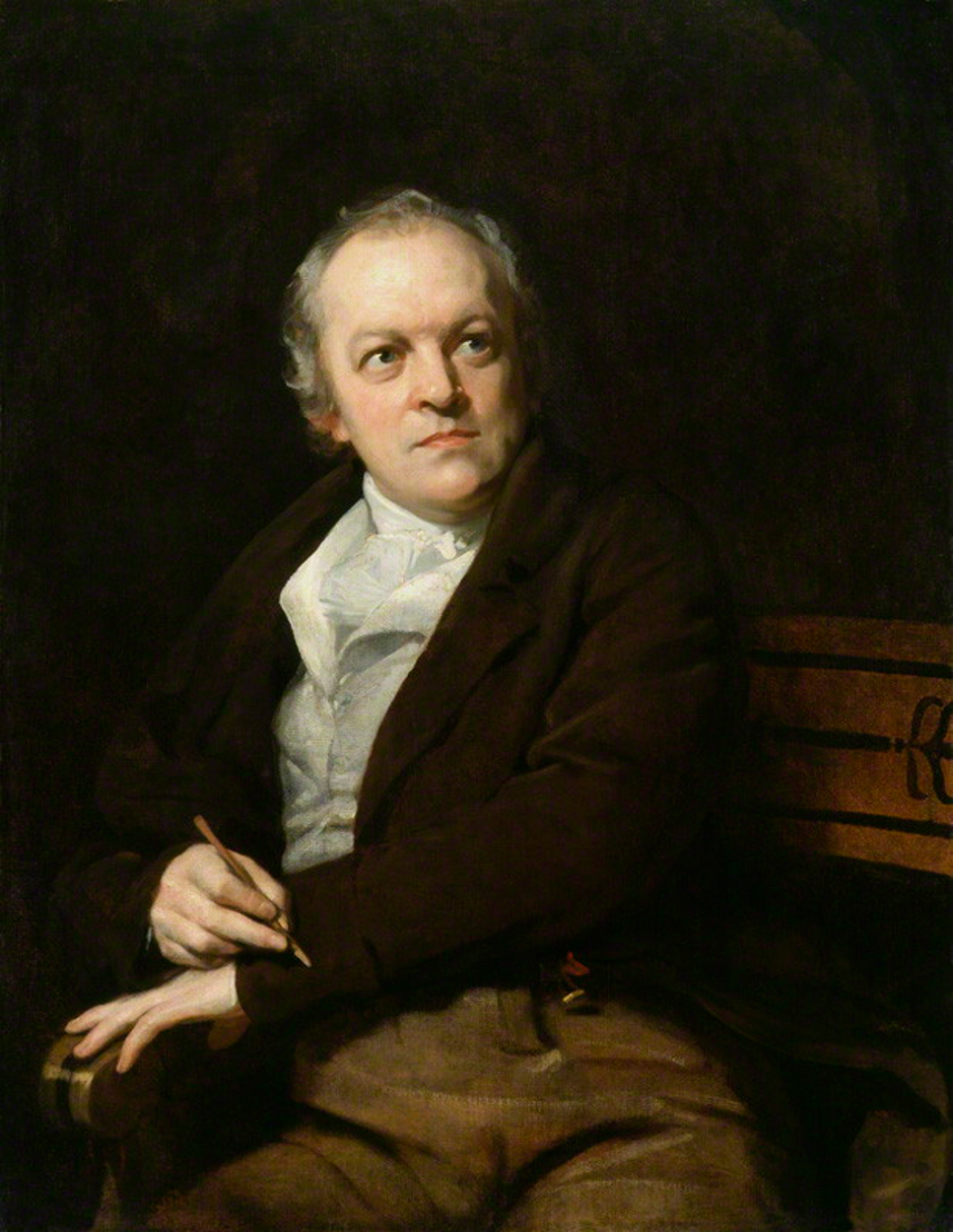Tomorrow is Palm Sunday, a Christian moveable feast that falls on the Sunday before Easter. The feast commemorates Jesus' triumphal entry into Jerusalem, an event mentioned in each of the four canonical Gospels. Tomorrow we will present one of Europeana's pieces as we do every Sunday of this month, but I couldn't resist the chance to present today this beautiful scene created by Blake.
This image, painted for Blake's first collector Thomas Butts, is out of the ordinary even for this artist. The figure of Jesus entering Jerusalem on Palm Sunday receives a distinctive treatment. Jesus and his party of disciples enjoy a more conventional treatment, although they display the elongated bodies and smallish heads that Blake adopted for a period of time. The crowd gathered around Jesus are definitely unconventional, since they are in various degrees of undress. The contrasting sizes of the various figures leads to a confusion of scale and perspective.
The "window" through which Jerusalem is visible is framed by trees, which are being climbed by individuals attempting to reach a higher level. Jerusalem is not pictured as the earthly city of Jesus's day but as the heavenly Jerusalem of the vision of John of Patmos.
During the period in which Blake was reevaluating Classical thought as an influence on his myth and prophecy, he seems to have reconsidered the neoclassical style of art he had previously adopted in much of his work. Neoclassicism gained prominence with the Enlightenment; Blake looked to replace them both. This picture owes much to Mannerism, a style of the 16th century. According to the National Gallery website, Mannerism demonstrated that "excellence in painting demanded refinement, richness of invention, and virtuoso technique, criteria that emphasized the artist’s intellect." Blake found that this technique allowed him to use his intellect and inventiveness to develop a fresh view of a Biblical scene that could be opened to vision.




Christ’s Entry into Jerusalem
oil on copper • 31.1 x 47.9 cm
 William Blake
William Blake